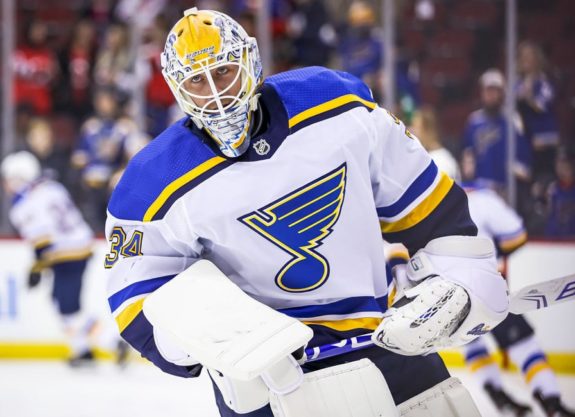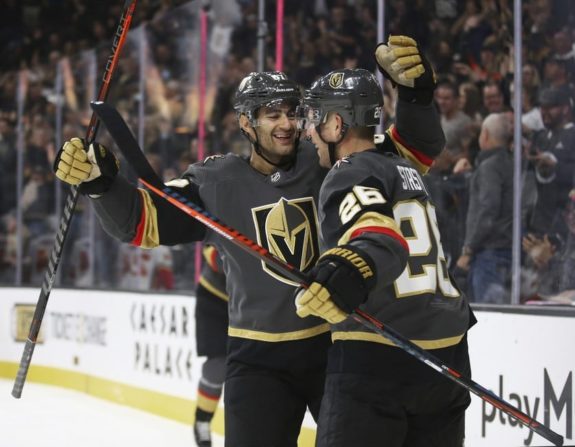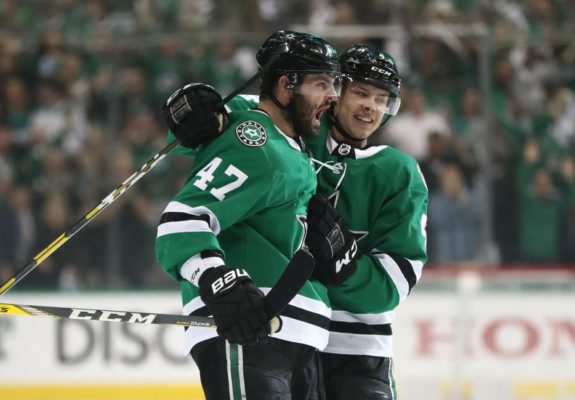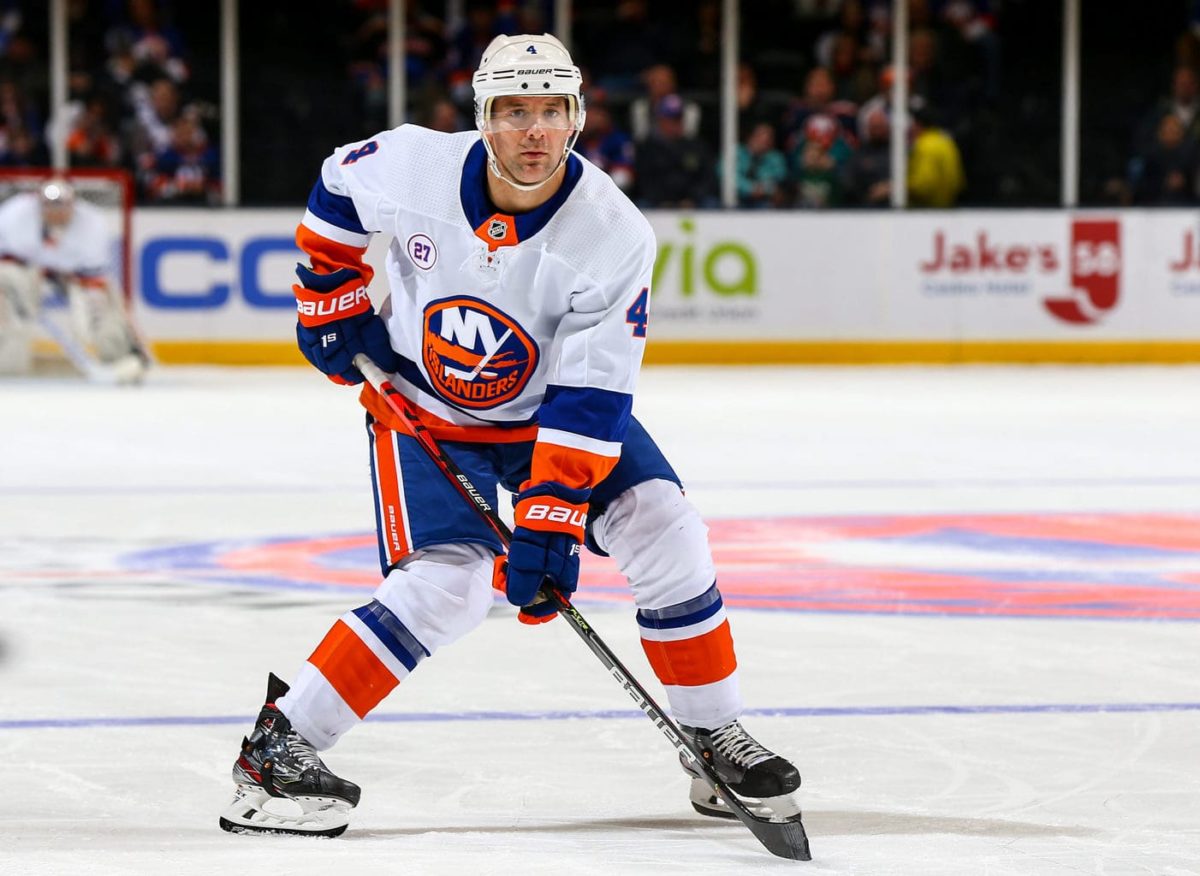Like it or not Montreal Canadiens fans, the NHL is a copycat league. Imitation of the last Stanley Cup champion is the sincerest form of flattery or, in the case of the 1995 New Jersey Devils, what led to the dead-puck era.
While the Canadiens had an impressive first-round showing against the Philadelphia Flyers, there is room for improvement. Here are the top lessons general manager Marc Bergevin can take away from each of the final four teams still around… if he hasn’t already.
5. Backups Are Useful
Credit where it’s due, Bergevin seems to have already addressed having failed to provide Carey Price with an adequate backup up to now. Jake Allen is quite possibly the 1B they need to give Price the amount of rest he requires to help lead the Habs to a long playoff run.

Nevertheless, to drive the point home, take a look at the four starting goalies left alive:
- Dallas Stars goalie Anton Khudobin is technically a backup, albeit arguably the best backup in the NHL.
- Robin Lehner was acquired by the Vegas Golden Knights at the trade deadline, effectively usurping actual No. 1 Marc-Andre Fleury down the stretch.
- New York Islanders backup Thomas Greiss actually pulled out the clinching Game 7 victory in Round 2 against the Flyers, after starter Semyon Varlamov almost let a 3-1 series lead slip away.
Really, the only legitimate No. 1, No. 2 tandem of the bunch comprises Andrei Vasilevskiy and Curtis McElhinney of the Tampa Bay Lightning. And McElhinney has proven himself to be quite reliable as a backup in the past to the point that he made 32 appearances for the Columbus Blue Jackets in 2014-15. That’s around the number Bergevin and head coach Claude Julien should be aiming for with regard to Allen.
4. Max Pacioretty Wasn’t the Problem (Golden Knights)
Now, obviously the Max Pacioretty trade has worked out for the Canadiens. Knowing what we know now and even then, it would be exceedingly difficult to argue the Habs shouldn’t have made the deal, as Tomas Tatar has worked out and Nick Suzuki looks like the real deal.
Nevertheless, there was a false narrative perpetuated during Pacioretty’s time here, that he couldn’t perform during the playoffs. Not only do his 10 goals (eight assists) in 19 playoff games with the Golden Knights prove just the contrary, but his 19 points (10 goals) with the Habs in 37 games were hardly as horrible as many of his detractors made them out to be.

To illustrate, Brendan Gallagher, who is considered the Habs’ top goal-scoring talent (and heart and soul), was on the same four Habs playoff teams as Pacioretty. In 40 games, he scored just 21 points. That’s effectively the same scoring rate as Pacioretty. Ex-Hab Alex Galchenyuk? Same four playoff teams, same story with 13 points scored in 28 games. In other words, it was/ is systemic.
Maybe you can make the argument that, as Habs captain, Pacioretty was expected to do a better job of leading from an offensive standpoint. Conveniently disregarding how the captaincy is largely a symbolic position that means very little, he only wore the “C’ for one of those playoff teams (2017). Except for a single player, that entire Habs squad had trouble putting points on the board, including current captain Shea Weber.
That one player? Alex Radulov, who Bergevin failed to re-sign the following posteason. It just goes to show that sometimes it’s about keeping players in the fold and not driving them out of town.
3. Locking Up Talent Is an Art Form (Stars)
Since we’re on the subject of Radulov, he ended up signing what has turned out to be a very affordable five-year, $31.25 million deal with the Stars. Reports are such that Bergevin had made the same offer. Tax rates aside, Radulov ultimately signed with the better team and, even though he didn’t have the best season for the Stars (34 points in 60 games), he’s having a decent playoffs (tied for third on the team with seven goals).
The situation may yet change, but, with just two seasons remaining on Radulov’s contract, it’s conceivable the Stars far from regret it. Considering other deals Bergevin has either signed himself (Price) or taken on (Shea Weber), Radulov’s probably wouldn’t even rank in the bottom five. Remember, Bergevin also still has to deal with the contract to which he signed Karl Alzner, who he effectively chose over Radulov that summer three years ago.

Regardless, the Stars prove, with exception to the Jamie Benn deal (eight years, $76 million), that long-terms deals don’t have to handcuff you. Ignoring the admitted benefit of favorable tax rates, the Stars have the following cost-effective deals on the books:
- Tyler Seguin (eight years, $78.8 million; expires at age 35)
- Joe Pavelski (three years, $21 million; expires at age 38)
- Esa Lindell (six years, $34.8 million; expires at age 31)
- John Klingberg (seven years, $29.75 million; expires at age 30)
- Ben Bishop (six years, $29.5 million; expires at age 36)
In his defense, Bergevin has made a few decent signings over the years. He should still take notes, considering Gallagher, Phillip Danault, Tomas Tatar and Jeff Petry all become unrestricted in one season. It’s also a matter of locking up the right ones and letting the wrong ones go.
2. Draft and Develop Your Talent Properly (Lightning)
No joke, eight of the top 10 playoff scorers on the Lightning are home-grown talents. They were each either drafted by the Lightning or signed by them to their first NHL deals (Kevin Shattenkirk, Blake Coleman).
Keep in mind that doesn’t include Vasilevskiy or Steven Stamkos, who’s injured and hasn’t played a single playoff game this posteason. Also, presumably as Habs fans, maybe you should conveniently ignore how Names Nos. 11 and 12 on the list are Mikhail Sergachev and Ryan McDonagh. Just fair warning.
In any case, compare and contrast that with the Habs’ situation, in which only three Habs draftees ranked among their top 10 scorers (Jesperi Kotkaniemi, Artturi Lehkonen and Brendan Gallagher). Hell, only eight in total played games for them this postseason.

It’s not just a matter of prestige, to be able to claim you draft and develop players better than other teams. There’s a very practical benefit to not having to deal away assets to acquire key building blocks like Suzuki.
Thankfully, signs are pointing to a positive change in direction in that respect, as the Habs have one of the best prospect pipelines in the NHL (on paper). No one knows for sure, though. Hopefully, those Habs hopefuls begin to develop with more regularity than in the past, along with some of their 12 projected picks in the upcoming NHL Entry Draft.
1. Yes, the Rules Let You Roll Four Lines (Islanders)
You can make the case that the Islanders winning this whole thing would be the worst-case scenario. After all, if the whole copycat argument holds true, you can then expect a new era of shutdown hockey to come to pass.
Look at it from a different standpoint though, a positive one: how the Islanders are finding success without a legitimate star player to their name (even if Mathew Barzal is quietly entering that territory). Head coach Barry Trotz rolls four lines to the point that his third-line center, Jean-Gabriel Pageau is tied for second on the team in goals.
More to the point, his bottom-pairing defensemen, Nick Leddy and Andy Greene, have five and four points respectively. In fact, Greene is also his lowest-ranking defenseman (with exception to Johnny Boychuk with only one game played) in terms of time on ice. He’s played an average of 17:42 per game. Greene’s counterpart on the Canadiens would be Victor Mete (12:30).

Hell, Casey Cizikas plays 14:09 on average, with his fourth line regularly getting shifts late in games. Jesperi Kotkaniemi, the Habs’ third-line center, for all intents and purposes, played just 13:53 per game these past playoffs.
Put simply, the Canadiens should aspire to have that same kind of depth. Any team should. Maybe the Habs are on their way, but one pre-playoff-round victory does not a contender make. Properly drafting, developing, signing and then playing the right players does. Even after that point, the actual winning is the hardest part of all.